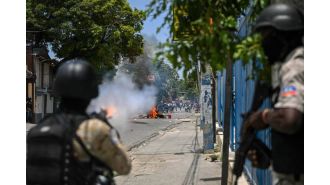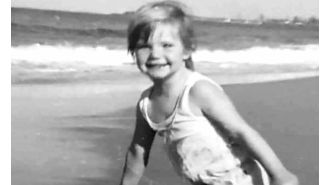New York Wants Health Workers to Join the Fight Against COVID-19. Will It Pick Up Their Medical Bills if They Get Sick?
States are recruiting retirees, recent graduates and other health professionals to help overwhelmed hospitals, but if they contract the virus while serving patients, they could be on the hook for any out-of-pocket medical costs.

As patients infected with the novel coronavirus begin to overwhelm hospitals in parts of the country, and more medical staff become ill, states are asking retirees, recent medical school graduates and other health professionals to step into the breach.
New York City, the current epicenter of the pandemic with more than 44,915 cases, is recruiting medical volunteers with exhortations that recall World War I and World War II-era posters, “We want you for medical work now.”
But the city is offering those volunteers little assurance that the government will cover out-of-pocket medical costs if they contract COVID-19, which, even for a person with health insurance, could mean thousands of dollars in bills.
The uncertainty has some volunteers, like Alisa Baer, second-guessing offering their services.
Baer, 40, who lives in Manhattan, was a pediatrician before she retired from medicine in 2013. With her business advising parents on car seats effectively on hiatus, she decided to volunteer through ServNY, the state’s registry of licensed medical professionals who have signed up to help during emergencies. She was asked to report for service on Thursday at one of New York City’s hardest hit facilities, Elmhurst Hospital in Queens, where the emergency department has been bombarded with COVID-19 patients.
But she immediately raised a crucial concern. If she became ill, who would pay the out-of-pocket medical costs, which in her case would include a deductible of nearly $8,000 before her insurance would kick in.
“It scares me more than getting sick,” Baer said in an interview with ProPublica. “The worst case for me with no income coming in would be to get hospital bills in the thousands of dollars.”
On Wednesday, she received a call from an official at Elmhurst, who said her care would be covered at Elmhurst or another of the city’s public hospitals if she became ill. But with nothing in writing, Baer is still weighing the risk.
The uncertainty she and other volunteers face underscores how even vital contingency efforts, like ServNY, were not prepared for the calamitous effects of COVID-19 on the region’s health care infrastructure.
The New York City effort is being coordinated by its Medical Reserve Corps, which is part of a network organized by the federal Department of Health and Human Services.
The website for the city’s Medical Reserve Corps states that its volunteers will not be covered by health insurance or workers’ compensation, which can cover lost income and medical care for people with work-related injuries or illnesses.
Jill Montag, a spokeswoman for the New York State Health Department, which has been coordinating recruitment efforts throughout the state, said the agency believes the “vast majority of volunteers already have health insurance.”
Representatives from Mayor Bill de Blasio’s office did not respond to requests for comment, nor did the agency that runs the city’s public hospitals, NYC Health + Hospitals, which is placing volunteers throughout the city.
On Monday, California announced it would pay medical professionals who offered to bolster the state’s ranks in battling the novel coronavirus. That same day, New York Gov. Andrew Cuomo implored health workers across the country to come to New York and that the favor would be returned as other communities found themselves at the center of the crisis.
It was a point he reiterated in his briefing the following day. “This is going to be a rolling wave across the country. New York, then it’ll be Detroit, then it’ll be New Orleans, then it will be California,” Cuomo said on Tuesday.
Dr. Kristen Kent, president of the New York chapter of the American Academy of Emergency Medicine, said she has seen a lack of coordination in the public health response and she is not surprised that issues like health care coverage for volunteers are unresolved.
“It’s going to decrease the amount of volunteers that we have, and we’re going to lose the volunteers that we do have when they get sick,” she said. “They’re putting not only their health, but their financial wealth at risk by volunteering. They have to be kept safe, and if something goes bad, they need to be taken care of.”
With an executive order on Monday by Gov. Gavin Newsom, California hopes to enlist some of the state’s 37,000 retired medical professionals as well as others still working toward degrees or licenses. The state will make them temporary employees, not volunteers, and will offer pay and malpractice insurance coverage; the public health agency said it did not know if the temporary employees would be provided health insurance.
California has 8,813 confirmed cases and 187 deaths from the coronavirus as of April 1, according to a count maintained by Johns Hopkins University.
At least 27 states are also allowing retired or inactive physicians to volunteer as a part of the response to the coronavirus, and some have waived fees for licenses, according to tracking from the Federation of State Medical Boards. In Illinois, Gov. J.B. Pritzker issued a “call to action in the fight against COVID-19,” singling out former medical professionals who had recently retired or left to work in a different field.
Those volunteers will staff 12-hour shifts at an “alternate care facility” at the McCormick Place Convention Center in Chicago, with the first 500 beds expected to be ready by the end of the week. Administrators are “working with the Illinois Emergency Management Agency to determine” whether medical volunteers will be paid, reimbursed for travel and other expenses, or be covered by liability or workers compensation, according to the program website which was updated March 29. Officials from the Illinois Department of Public Health didn’t respond to requests for clarification.
The American Medical Association, the influential physicians advocacy group, released guidance on Monday for retired physicians who may be enlisted to provide care during the COVID-19 pandemic. While physicians are ethically obligated to ensure access to care, Patrice Harris, the AMA’s president, said older doctors should consider not only their own health, but the availability of protective equipment and the possibility of seeing patients remotely.
“As with all people in high risk age groups, careful consideration must be given to the health and safety of retired physicians and their immediate family members, especially those with chronic medical conditions,” Harris said in the statement.
Baer has talked with her family about the risks involved in volunteering, and she still wants to help her city even though she is certain she’ll end up infected.
“I think this is a time of need, and I’m less at risk than a 60-year-old,” she said, but “I shouldn’t be put in financial peril for volunteering.”
So she is hoping, she said, that the city will put in writing its promise to cover her medical care if she becomes ill while volunteering. Otherwise, she said, the risk is too great.






